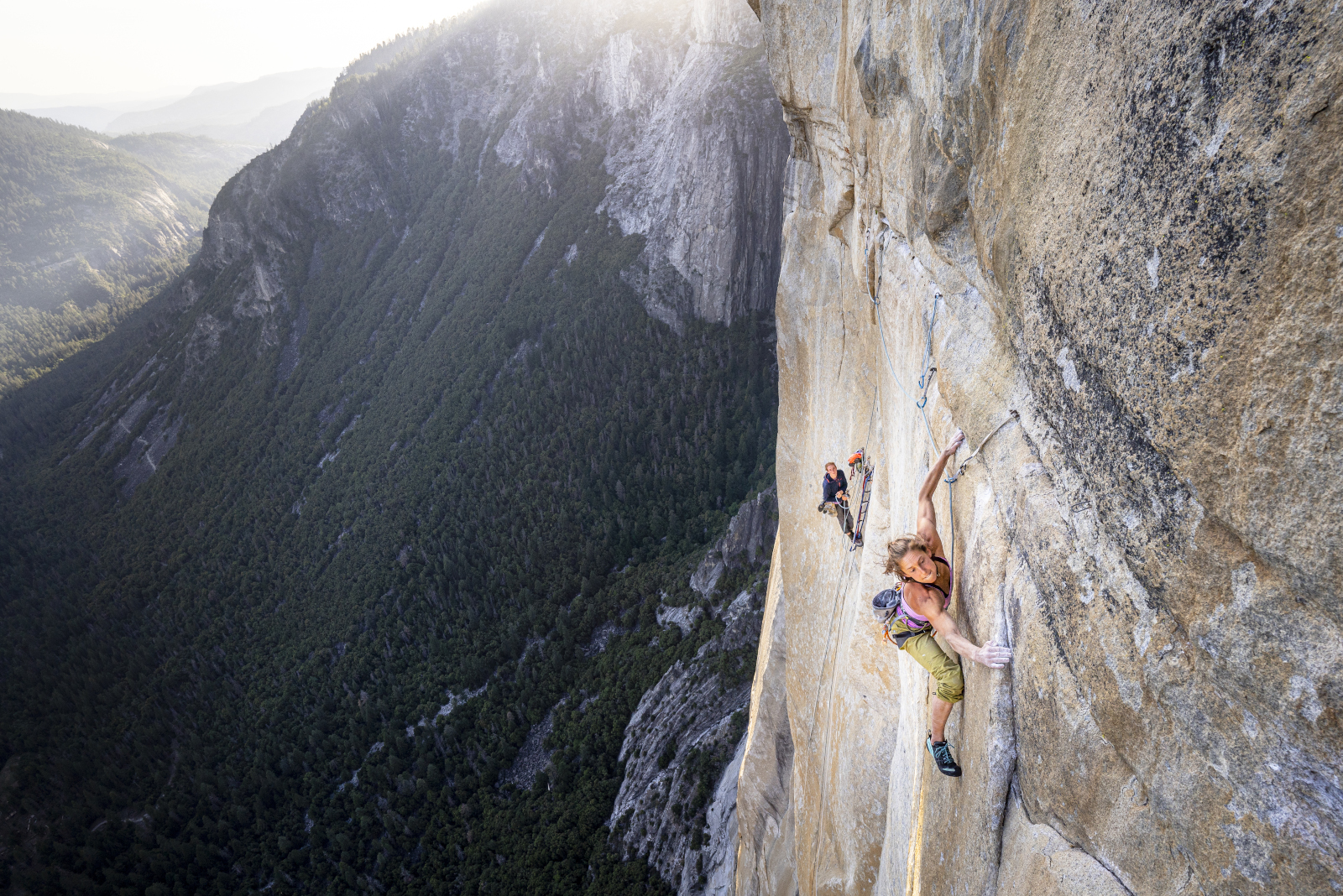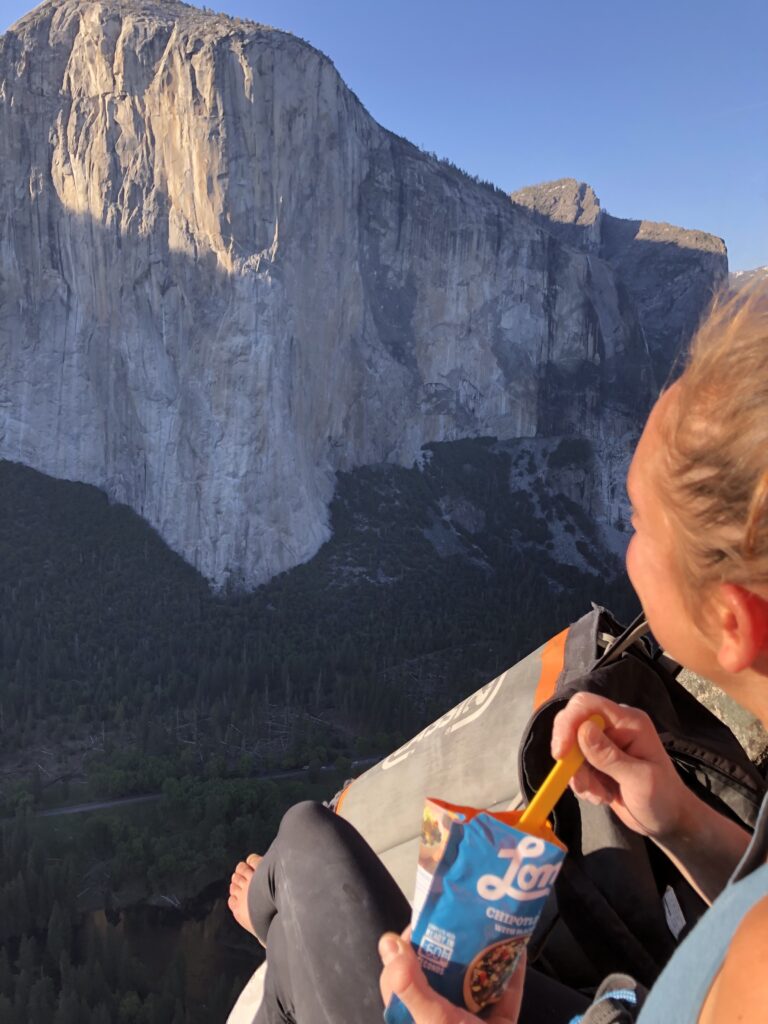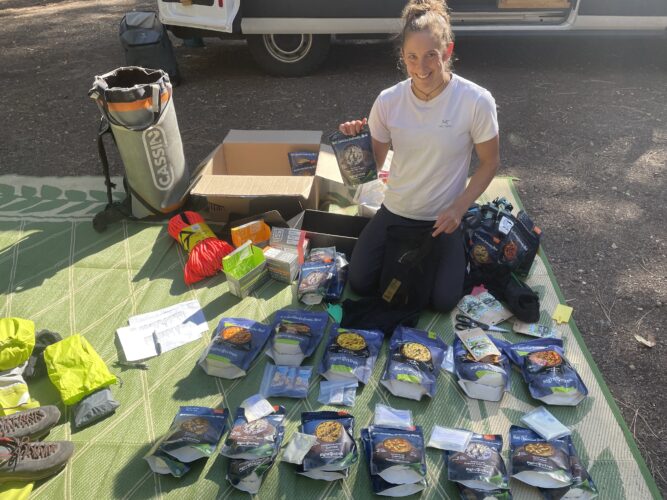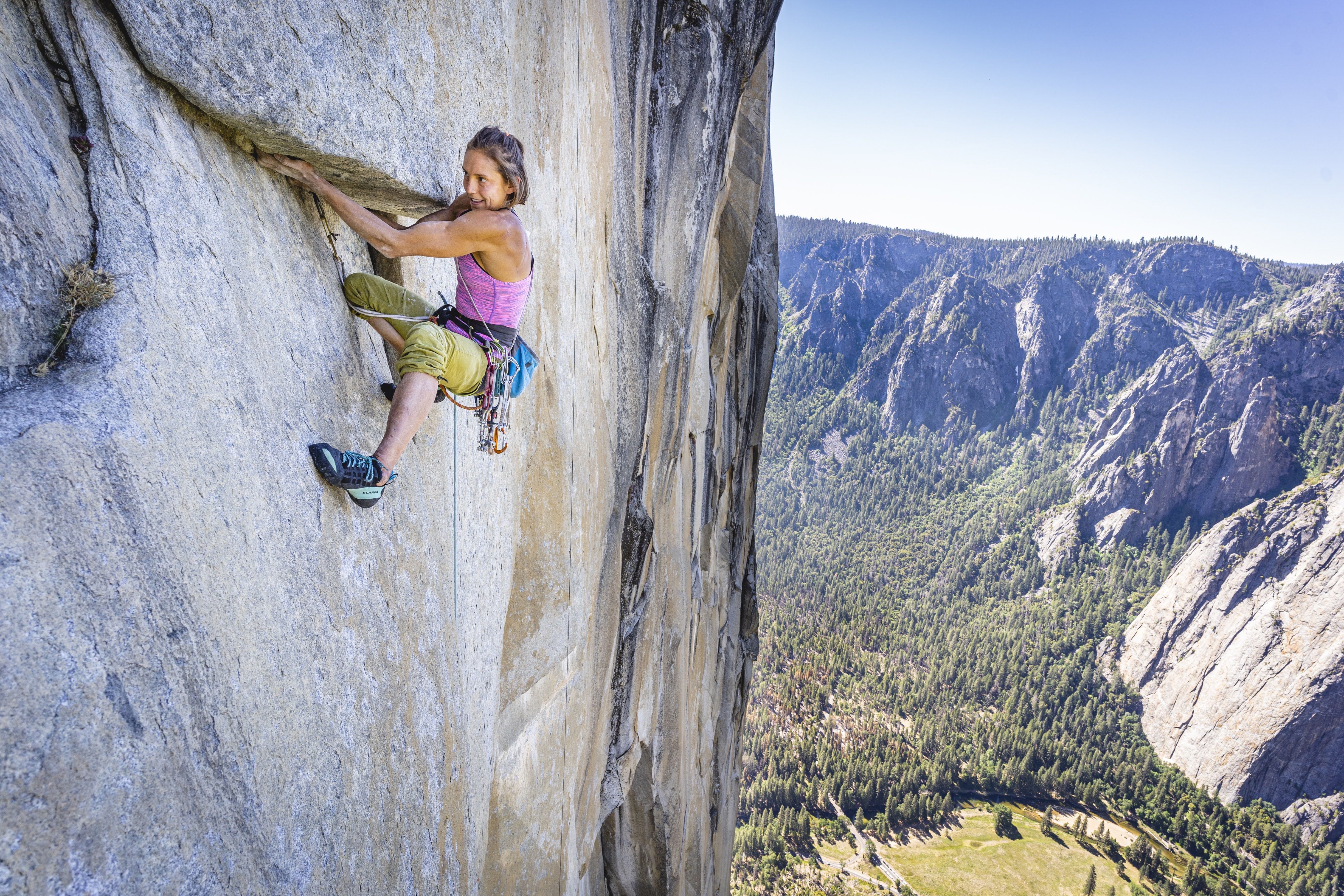Big Wall Nutrition
01-11-2024
An interview with Marisa Michael and Amity Warme
Amity Warme

Originally posted by Real Nutrition
Marisa: How do prep you food for a big wall climb?
Amity: First, I plan out the number of days that we will be on the wall, then account for breakfast, lunch/ day snacks, and dinner for each of those days. As I’m packing, I lay out all my meals and snacks and separate them by day. Life on a big wall is already logistically complicated, so the more food prep I can do beforehand, the easier it makes things on the wall. I’ll group, bag, and label each day’s worth of food so that it is easy to find in the haul bag and portion out when on the wall. There is no way to refrigerate things up there so that means mostly dehydrated or freeze dried meals for breakfast and dinner and lots of energy bars, trail mix, and other easily portable snack foods that provide both carbs and protein. Additionally, space and weight are at a premium, so maximizing energy density is important.

Marisa: Do you have certain foods you always bring or always avoid? Why?
Amity: Yep! I have found some go-to’s that work really well for me. I tend to rely on these things because I know they will provide good energy, help with recovery for back to back days, and not cause gastrointestinal distress while on the wall. I’m always trying to dial things in though, and I think my fueling strategy gets better with each big wall mission I do!
Always bring:
- Pre-made oatmeal packs with my favorite fixings
- Dried fruit (my favorite are figs!)
- A salty nut or seed (my favorite are pumpkin seeds!)
- My favorite quick energy bar (EnduroBites*)
- Dinner with high protein and carbs
What I miss most:
- In my day to day life on the ground, I love eating tons of fresh fruits and vegetables but those things just aren’t realistic in a big wall setting. I always crave a crunchy, juicy apple when I’m up there for days on end eating nothing but dried food so sometimes I’ll sneak in 1-2 but for the most part fresh produce is what I miss the most up there and am always eager to eat when I get down.
Marisa: Do you have a certain fueling and hydration schedule when climbing? What does a typical day look like on the wall?
Amity: My fueling and hydration schedule is not super rigid when I’m on the wall because it is dictated by the climbing schedule which can vary quite a bit day to day depending on conditions, which pitches we are trying that day, how many pitches, etc. So the timing can vary, but generally speaking, a typical day would look like:
Breakfast - usually pretty early because you tend to wake up with the sun up there:
- Oatmeal with protein powder, dried fruit, chia seeds, and cinnamon
- Coffee
Snacking throughout the day - I generally don’t eat a full ‘lunch’ because I am on the move pretty much all day and it works better for me to just be really consistent about munching on something between every pitch. A long, involved pitch plus hauling up to a couple hundred pounds of supplies up after you uses a ton of energy so I try to eat something between every pitch. Some typical options include:
- Bagel
- Bars (EnduroBites*, protein bar, RX bars)
- Dried fruit (figs, dates, mango, apricots, etc.)
- Nut butter packets
- Something salty like pretzels or nuts/seeds
Dinner: I aim to get at least 25 grams of protein and 75-100 grams of carbs to help me refuel and recover in order to perform at a high level again the next day. This could be a homemade combo or one of many prepackaged options.
- RightOnTrek* packaged dinners worked really well for me on my most recent climb. The cooking method with this brand makes them easier to digest than many packaged, dehydrated meals, they met my macronutrient criteria that I aim for, and they tasted great. We split four portions between three people to make sure we were all getting enough!
Dessert:
- Chocolate! A couple tasty bites are a tasty way to cap off the evening.

Marisa: How do you know how much food to bring?
Amity: Underfueling on a big wall climb is one of the biggest mistakes I see people make. You set yourself up for so much more success if you bring enough food. It is super easy to underestimate the amount of food you need when you are up there for multiple days in a row because when you are on the ground packing, it looks like a TON of food to haul. The energy expenditure while big wall climbing is extreme though!! Of course, the climbing itself takes a lot of energy, but then you add hauling a couple hundred pounds of gear plus exposure to the elements and additional psychological stress. All this adds up to massive energy expenditure! And each day compounds on the previous day so if you are rationing food straight away, you are just setting yourself up to be in a massive calorie deficit that will have a hugely detrimental effect on your performance, attitude, and decision making skills. My fueling strategies have improved with each big wall I’ve done, but mostly this just means bringing much more food than I used to!

The meals from Right On Trek for my adventure on El Niño with Brent Barghahn.

All our food for climbing Golden Gate with Tyler Karow, with gear in the background.
Marisa: Do you use electrolytes when doing big wall climbing?
Amity: I do use electrolytes! A lot of the time up there I am exposed to the sun and other elements. Plus I am almost constantly in motion so I end up losing a lot of fluid and electrolytes through sweat.
The typical water allocation is 1 gallon per person per day. This includes enough water for drinking plus cooking breakfasts and dinners. Logistically this is important because of the amount of weight it adds up to. Of course, you are hauling all your water up from the ground with you so, for example, on my most recent big wall climb, we hauled 175 lbs of water because we were planning for 7-8 days for 3 people (myself, my climbing partner, and a videographer).
Staying hydrated is super important though and I think an electrolyte can help maintain proper hydration levels. My favorite to bring on a big wall is LMNT* because it contains a high amount of sodium (and other electrolytes) and because the single serve packets are really convenient up there. It’s nice to have a little packet versus trying to scoop from a big container when you’re on the wall – again, convenience is everything on the wall. I like that LMNT isn’t syrupy sweet like some electrolytes are because I get tired of sweet flavored bars and things while on the wall. LMNT doesn’t have the carb content that many sports drinks do, but I make up for that by just eating more carbs throughout the day instead of drinking them.
*Relationships Disclaimer:
I have working relationships with these three brands:
- EnduroBites - I receive free product in an ongoing relationship.
- RightOnTrek - I received support for my El Niño objective (breakfasts and dinners).
- LMNT - I received support for my El Niño objective (a box of product).
I do not and have not received financial support from any of these brands (including no kickback / affiliate links). I reference these products because I believe in them and use them to fuel my adventures.
